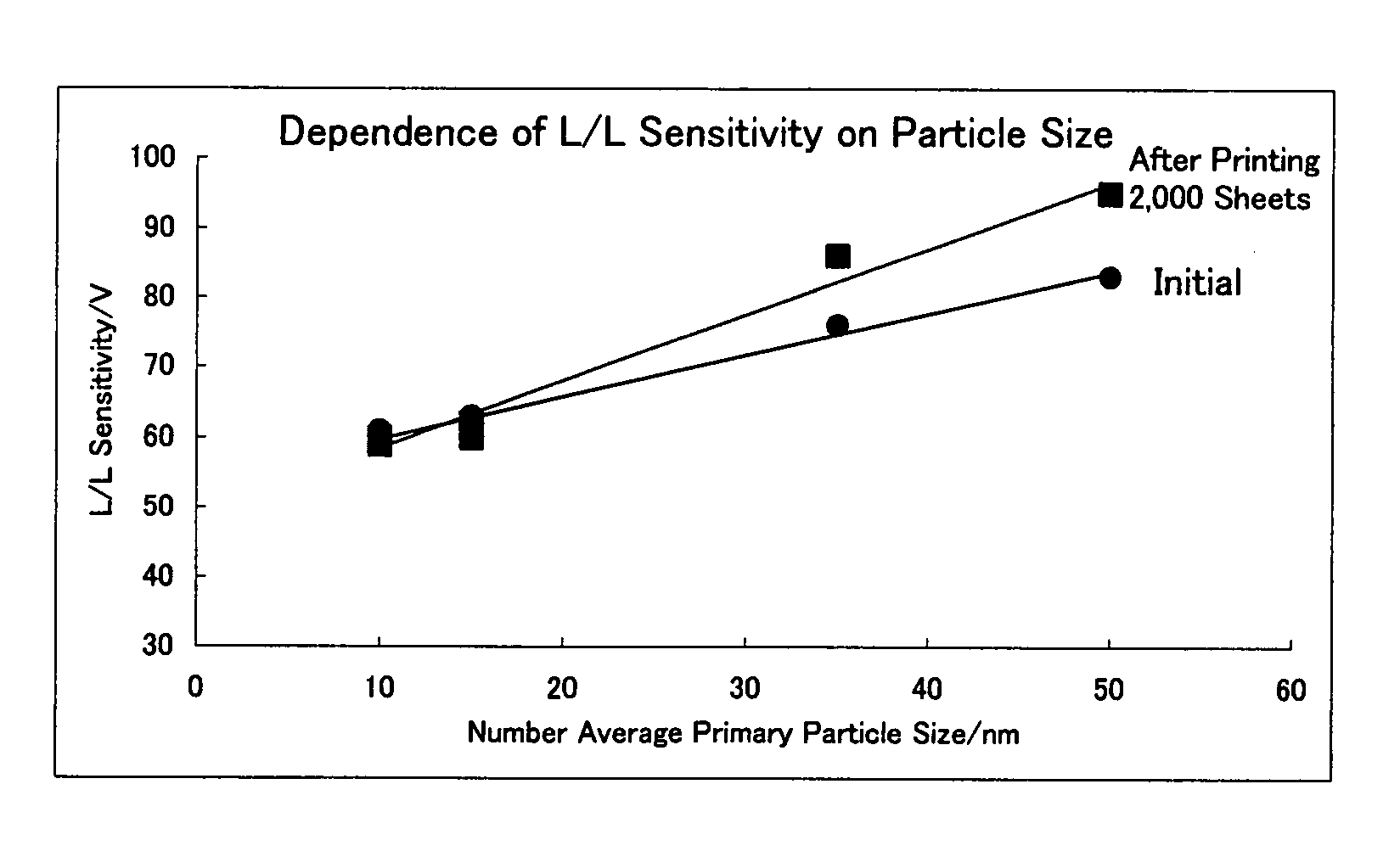Image forming apparatus
a technology of image forming apparatus and forming apparatus, which is applied in the direction of electrographic process apparatus, instruments, optics, etc., can solve the problems of reducing local potential, reducing the sensitivity of the electrotrophotographic photoreceptor using organic photoconductive materials, and various image defects and density unevenness, etc., to achieve excellent image quality, excellent image quality, and excellent image quality
- Summary
- Abstract
- Description
- Claims
- Application Information
AI Technical Summary
Benefits of technology
Problems solved by technology
Method used
Image
Examples
example 1
Formation of Undercoat Layer
[0090]2.2 Parts by mass of titanium oxide MT-02 (number average primary particle size: 10 nm, manufactured by TAYCA CORPORATION) obtained by a surface treatment and 1 part by weight of 6 / 12 / 66 / 610 quadcopolyamide resin (AMILAN CM8000: manufactured by Toray Industries, Inc.) as a binder resin were dispersed in 10 parts by weight of methanol and 2.5 parts by weight of butanol using a paint shaker for 10 hours to prepare a coating solution for an undercoat layer. The titanium oxide used was wet surface treated with alumina and silica in a solvent such as toluene, and then wet surface treated with methylhydrogenpolysiloxane.
[0091]The resulting coating solution for an undercoat layer was filtered with a filter having a pore size of 5 μm, coated on an aluminum drum-shaped substrate having a diameter of 30 mm, a full length of 238.5 mm and a surface roughness (Ry) of 1.0 μm as a conductive substrate using a dip coating method, and then heat treated at 130° C. fo...
PUM
| Property | Measurement | Unit |
|---|---|---|
| number average primary particle size | aaaaa | aaaaa |
| thickness | aaaaa | aaaaa |
| number average primary particle size | aaaaa | aaaaa |
Abstract
Description
Claims
Application Information
 Login to View More
Login to View More - R&D
- Intellectual Property
- Life Sciences
- Materials
- Tech Scout
- Unparalleled Data Quality
- Higher Quality Content
- 60% Fewer Hallucinations
Browse by: Latest US Patents, China's latest patents, Technical Efficacy Thesaurus, Application Domain, Technology Topic, Popular Technical Reports.
© 2025 PatSnap. All rights reserved.Legal|Privacy policy|Modern Slavery Act Transparency Statement|Sitemap|About US| Contact US: help@patsnap.com



